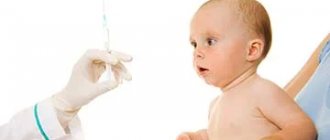Fluorography or CT scan of the lungs? Which examination method is better and more expedient? These questions arise for many people who plan to diagnose the respiratory organ for preventive purposes, when suspicious symptoms appear, or after chest injuries.
Both computed tomography and fluorography are radiographic methods based on the property of tissues and organs, depending on their density and morphology, to transmit X-rays differently.
However, computed tomography allows one to obtain clearer images in three projections, and then, based on them, to recreate a 3D reconstruction (3D model) of the area of the body under study. When needed, what else is the difference between fluorography and CT of the lungs? Let's take a closer look.
Stereotypes and differences from radiography
When undergoing an examination, it is important to pay attention to the direction issued by the attending physician. If it says that you need to undergo fluorography, you do not need to change the order yourself, relying on a classic X-ray to better show the condition of your lungs. Such ignoring of specialist advice will only lead to unreasonable radiation exposure to the body. In medicine, radiation dose limits (1 mSv/year) are established only for healthy people when conducting preventive studies (for example, when applying for a job). Limits on radiation doses required for diagnostic purposes (in sick people) are not established by law. It only states that the doctor should strive for a minimum level of radiation, but not at the expense of the quality of diagnosis. In general, a reasonable postulate, but how is it implemented in practice? But in practice in Russia the average “medical” radiation dose turns out to be several times higher than in the UK, USA and France. At the same time, in some of our regions the average “medical” radiation dose exceeded 3 mSv. Fluorography provides less information than radiography. But the World Health Organization does not recommend the use of traditional film fluorography, even in underdeveloped countries. The solution to the problem was the transition to digital fluorography, which, with high information content, reduces the radiation dose several times. Here are the approximate radiation doses (mSv) that a person receives when examining the chest using various methods:
- radiography (in two projections) – 0.25;
- fluorography (in one projection) – 0.6–1.6;
- fluoroscopy – 3.0;
- digital fluorography – 0.01–0.06;
- computed tomography – 3.5–5.0.
So, if nothing bothers you, and you are referred for an X-ray for prevention, then it is better to undergo digital fluorography or radiography (“image”) instead of conventional fluorography. You should definitely refuse to perform fluoroscopy (when the doctor looks at the patient behind a screen): not only does the patient receive a large dose, but his image will not remain, and the conclusion will be solely on the conscience of the doctor who conducted the study.
How does a CT scan differ from an X-ray of the lungs?
The fluorography method was patented in the 1940s. The first images were printed on film containing silver. The research was expensive and was not as widespread and widespread as it is today. However, in the middle of the 20th century, fluorography of the chest organs proved to be excellent in the diagnosis of tuberculosis, oncological tumors, and bone fractures. When images began to be displayed on a screen instead of film and digital fluorography appeared, the method became more accessible, images became more convenient to store, and it became possible to enlarge them and adjust the quality.
CT scanning was not invented and patented until the 1970s, but it revolutionized modern medical diagnostics and scientists Godfrey Hounsfield and Allan Cormack were awarded the Nobel Prize for their discovery. The novelty consisted of a fundamentally important and new opportunity to study internal organs, bones and the vascular bed “in volume”, that is, on slice images in three projections. Computer processing made it possible to combine multiple images obtained as a result of scanning the body with dynamically rotating sensitive sensors into a detailed and detailed 3D model.
Computed tomography (CT) differs from x-rays in a number of ways:
1. Result of lung examination. A fluorogram is a planar two-dimensional image in a frontal projection. Digitization of the image allows you to enlarge the image, but the information content of lung fluorography is lower due to an incomplete two-dimensional view and possible artifacts (distortions). Inaccuracies are possible due to the overlapping of shadows of organs on some areas of tissue. The result of a CT scan of the lungs is recorded on a DVD, which stores many cross-sectional scans (up to 1 mm thick) of the chest in three projections: horizontal, frontal, sagittal, as well as a 3D model of the respiratory tract, skeleton and vascular bed (if the study was carried out with contrast).
2. Technique. Both fluorography and CT of the lungs are performed quickly (1-3 minutes) and do not require preliminary preparation. An exception is a CT scan of the lungs with contrast - such an examination takes 10-15 minutes; there are recommendations that should be followed before the examination. Modern multislice tomographs (in particular, our Siemens somatom go.now device) scan the chest in dynamics - the patient moves on the tomograph table to the gantry (ring-shaped frame), and sensitive sensors located in several rows move in a spiral and take pictures. To obtain a fluorographic image, the patient needs to press his chest against the screen and hold his breath.
3. Image clarity. The clarity of chest CT images is improved. Make the picture more contrast, better examine the vessels and soft tissues, possibly by intravenous administration of an iodine-containing drug (CT scan with contrast). Thanks to the special technique of the X-Ray procedure, the rays obtained during tomography have a higher penetrating power.
4. Radiation dose. Radiation exposure during fluorography is minimal - 0.05–0.5 mSv. CT scan of the lungs shows 2–2.9 mSv. This is a harmless radiation exposure. It is believed that it is safe to do up to 5 CT scans within a year.
5. Availability. The cost of computed tomography is higher, and not all medical institutions have special equipment. Meanwhile, fluorography is suitable for annual preventive screening (if there are no special indications for CT) and various medical commissions.
Classification of fluorography modes
A preventive examination of the lungs should be done once every 2 years, and for certain categories (for example, people with chronic diseases or members of other risk groups) - once a year or even 2 times a year.
Patients who are already registered at a tuberculosis dispensary are prescribed a test much more often: at the beginning of a course of therapy, the interval between procedures is about three to four months, depending on the intensity of treatment, the characteristics of the development of the disease, and the individual properties of the body.
With positive dynamics of treatment, the regimen changes. At first, monitoring is carried out approximately once every six months while maintenance therapy continues, and after complete recovery and deregistration, the patient needs to be examined on a general basis - annually.
Using a digital camera ensures that the image is quickly captured when the image is reconstructed using high-tech software. The result is displayed on a computer monitor, which you can:
- put on digital media;
- print on paper.
The examination results are stored in a database, which ensures their availability for the patient and doctor during the entire observation period. When you enter your last name along with your residential address, the program will display all previously recorded survey results. All that remains is to compare the updated and past information to track the dynamics.
Main indications
The main objective of the diagnostic method is to identify diseases of the lungs or bronchi. It is not for nothing that the technique is considered a preventive approach that prevents serious complications for diseases of the respiratory system.
As a rule, a local therapist or pulmonologist gives a referral for testing when a patient comes to them with characteristic symptoms:
- prolonged persistent cough;
- dyspnea;
- pain syndrome in the chest area.
When the above signs are detected, the chance of detecting a pulmonary or bronchial deviation increases significantly. Often the study allows you to establish:
- inflammatory process even at the initial stage of development;
- pneumothorax;
- neoplasms of malignant and benign nature;
- pleural damage;
- emphysema.
But most often, even during a preventive examination, tuberculosis is detected, so annual mandatory examinations are recommended, which help prevent the disease, which currently leads in a high percentage of deaths.
In addition to standard indications, there are two more categories for examination: family members living with pregnant women or newborns in order to minimize the risk of illness in infants and persons of military age.
The second category will include unscheduled fluorography if there is suspicion of:
- foreign body in the lungs;
- inflammation;
- tuberculosis;
- tumors of the mediastinal organs;
- diseases of the heart, large vessels.
Such precautions make it possible to recognize concomitant diseases such as fibrosis or sclerosis. Also, using a small image, it is possible to determine the localization:
- cysts;
- cavern;
- abscesses;
- infiltrates;
- accumulations of gases.
Despite the productivity of the technique, fluorography can hardly be called the main argument for diagnosing pulmonary pathologies. It is often necessary to use auxiliary tests, including sputum analysis, radiography, and MRI with contrast.
X-ray
Allows you to explore the internal structures of the body. The photo is usually life-size. The method can be survey or targeted, when a specific area of our body is studied. As a result, even small pathological changes can be seen. It is used only to clarify or make a correct diagnosis. It is not used for prophylactic purposes.
Examination helps to detect tuberculosis, pleurisy, cancer, fractures and other conditions. The image will allow you to form a clear picture regarding the size and contours of organs, the presence of cavities and foci of inflammation.
Pregnancy and other contraindications
Contraindications to manipulation are pregnancy and childhood. It is believed that the minimum threshold is 15 years, since before this time it will be difficult for children to tolerate increased radiation exposure.
Among the relative contraindications, which are sometimes ignored when the benefit exceeds the possible harm, are:
- claustrophobia;
- dyspnea;
- general serious condition.
But sometimes even pregnancy, which is a contraindication for almost all types of diagnostics, does not become an obstacle to the procedure. It should be done only after preliminary consultation with your doctor. Control must be carried out by a specialist throughout the entire manipulation.
An important factor in the success of diagnosis and safety for the fetus is the appointment of an examination after 25 weeks. During this period, it had already formed its basic systems.
The reasons for “photographing” the respiratory system of pregnant women and women during the breastfeeding period should be as compelling as possible. Preventive X-ray examinations are not carried out for pregnant women and children under 15 years of age.











